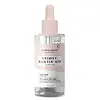What's inside
What's inside
 Key Ingredients
Key Ingredients

 Benefits
Benefits

 Concerns
Concerns

No concerns
 Ingredients Side-by-side
Ingredients Side-by-side

Water
Skin ConditioningGlycerin
HumectantSalicylic Acid
MaskingGlycolic Acid
BufferingTocopheryl Acetate
AntioxidantAloe Barbadensis Sprout
HumectantLac Extract
Skin ConditioningHamamelis Virginiana Leaf Extract
Skin ConditioningChamomilla Recutita Flower Extract
MaskingPentylene Glycol
Skin ConditioningPolysorbate 20
EmulsifyingPhenoxyethanol
PreservativeEthylhexylglycerin
Skin ConditioningJuniperus Oxycedrus Wood Oil
MaskingWater
Skin ConditioningAloe Barbadensis Leaf Juice
Skin ConditioningSodium Ascorbyl Phosphate
AntioxidantGlycerin
HumectantPhenethyl Alcohol
MaskingCaprylyl Glycol
EmollientEthylhexylglycerin
Skin ConditioningHydroxyethylcellulose
Emulsion StabilisingXanthan Gum
EmulsifyingCitrus Limon Fruit Oil
AstringentSodium Hyaluronate
HumectantHydroxypropyl Cyclodextrin
MaskingPalmitoyl Tripeptide-38
Skin ConditioningCamellia Sinensis Leaf Extract
AntimicrobialGlycine Soja Protein
EmulsifyingHydrolyzed Rice Protein
Skin ConditioningSuperoxide Dismutase
AntioxidantSimmondsia Chinensis Seed Oil
EmollientTocopheryl Acetate
AntioxidantWater, Aloe Barbadensis Leaf Juice, Sodium Ascorbyl Phosphate, Glycerin, Phenethyl Alcohol, Caprylyl Glycol, Ethylhexylglycerin, Hydroxyethylcellulose, Xanthan Gum, Citrus Limon Fruit Oil, Sodium Hyaluronate, Hydroxypropyl Cyclodextrin, Palmitoyl Tripeptide-38, Camellia Sinensis Leaf Extract, Glycine Soja Protein, Hydrolyzed Rice Protein, Superoxide Dismutase, Simmondsia Chinensis Seed Oil, Tocopheryl Acetate
 Reviews
Reviews

Ingredients Explained
These ingredients are found in both products.
Ingredients higher up in an ingredient list are typically present in a larger amount.
Ethylhexylglycerin (we can't pronounce this either) is commonly used as a preservative and skin softener. It is derived from glyceryl.
You might see Ethylhexylglycerin often paired with other preservatives such as phenoxyethanol. Ethylhexylglycerin has been found to increase the effectiveness of these other preservatives.
Glycerin is already naturally found in your skin. It helps moisturize and protect your skin.
A study from 2016 found glycerin to be more effective as a humectant than AHAs and hyaluronic acid.
As a humectant, it helps the skin stay hydrated by pulling moisture to your skin. The low molecular weight of glycerin allows it to pull moisture into the deeper layers of your skin.
Hydrated skin improves your skin barrier; Your skin barrier helps protect against irritants and bacteria.
Glycerin has also been found to have antimicrobial and antiviral properties. Due to these properties, glycerin is often used in wound and burn treatments.
In cosmetics, glycerin is usually derived from plants such as soybean or palm. However, it can also be sourced from animals, such as tallow or animal fat.
This ingredient is organic, colorless, odorless, and non-toxic.
Glycerin is the name for this ingredient in American English. British English uses Glycerol/Glycerine.
Learn more about GlycerinTocopheryl Acetate is AKA Vitamin E. It is an antioxidant and protects your skin from free radicals. Free radicals damage the skin by breaking down collagen.
One study found using Tocopheryl Acetate with Vitamin C decreased the number of sunburned cells.
Tocopheryl Acetate is commonly found in both skincare and dietary supplements.
Learn more about Tocopheryl AcetateWater. It's the most common cosmetic ingredient of all. You'll usually see it at the top of ingredient lists, meaning that it makes up the largest part of the product.
So why is it so popular? Water most often acts as a solvent - this means that it helps dissolve other ingredients into the formulation.
You'll also recognize water as that liquid we all need to stay alive. If you see this, drink a glass of water. Stay hydrated!
Learn more about Water